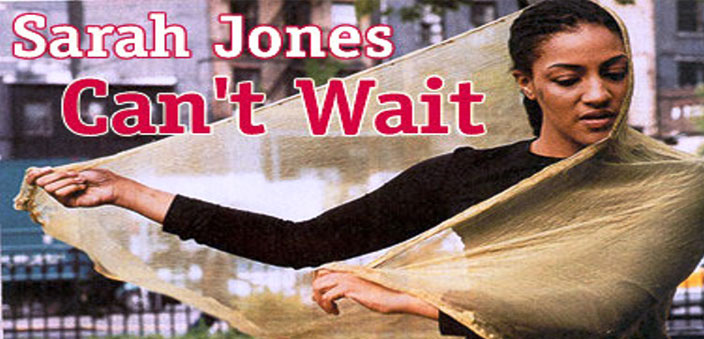Women Can’t Wait is a one-woman performance by Sarah Jones. The 27-year-old Sarah comes on stage, sans make-up or costume, decked up in a black shirt and black tights, with a luminous, lemon green veil as the only prop for the 50-minute performance. The play is the result of a brain-storming session between Jessica Neuwirth, Executive Director of Equality Now and Sarah Jones, a poet-turned-actress based in the US. Sarah Jones Can’t Wait, earlier named Women Can’t Wait, is a powerful statement on violence against women, that mainly focusses on discriminatory laws in several countries across the globe, denying equal rights to half the world’s population. Jones wrote the script herself, and Gloria Feliciano directed her performance. It is a performance commissioned by Equality Now as part of their international campaign against discriminatory laws in 45 countries. The performance highlights the impact of discriminatory laws on the daily lives of women and girls in eight countries around the world.
Born in Baltimore and brought up in Boston, Washington D.C. and New York City, Sarah has been performing since she was a child. Her first poem, on the politics of Ronald Reagan, came out when she was six. Five years later, she found herself acting in a Shakespeare play. She then switched over to writing. Returning to New York in 1995, after attending Bryn Mawr College, without any formal training in acting, Sarah began to perform the spoken word at the Nuyorican Poets Café. She later won the Nuyorican Café’s Grand Slam Championship, and was selected for the national semi-finalist Nuyorican Slam Team, beginning to perform nationally and working with luminaries like Paul Simon and Gil Scott-Heron.
Shortly afterwards, inspired by New York City, Jones wrote Surface Transit. “New York City is an impossible mix of cultures, races, languages, religions, and all their individual prejudices, conscious or otherwise,” says Sarah. Neuwirth happened to catch a show of Surface Transit and was captivated by the performance. Jones portrayed eight very different New Yorkers and used their chance encounters in the city’s transit system to explore racial and sexual discrimination. “She was brilliant”, says Neuwirth, adding, “What really struck me was how she brought the complicated issues behind the characters to life.” She approached Jones to find out if she would be interested in putting together a dramatic piece for the UN special session, and Jones agreed. The result was, Women Can’t Wait. Jones plays eight women who have come to the United Nations – from India, Japan, Kenya, Jordan, France, Uruguay, Israel and Brooklyn, N.Y. – to tell their stories.
The stage is set
The stage is set with a podium and a microphone into which Sarah ‘addresses’ the imaginary UN session in the accent suited to the country she comes from. Her body language, the tone and pitch of her voice, match the body language and the voice of the woman she is impersonating.
For instance, she covers her head to become Parveen from India, working up the courage to speak out about marital rape committed on her by her husband against which the law of the country offers her no protection at all. In an instant, she transforms the chunni into a scarf tied jauntily around her neck, turning into Emeraude, a vivacious French lady who defies the law banning women from working nights in France. “I am a dedicated criminal,” says this teacher, tongue firmly in cheek, referring to her dedication to her teaching job at a night school. Tomoko from Japan wishes to marry the man she is in love with. But the country’s law maintains that she cannot do so unless her first husband gives her written consent to divorce him. Being the batterer that he is, he is loathe to let go of his vulnerable victim, trapped more by the laws of the country, than by the violent husband. Hala from Jordan speaks about her sister Leila, whose 15-year-old brother pumped six bullets into her stomach and got sentenced for six months. Her crime was that she ran away from home to escape getting married to a man old enough to be her father. It was an ‘honour killing’ decreed the court, and the teenage brother grew into adulthood with his sister’s blood on his hands, without any sense of remorse for having done what he did. Alma from Uruguay says how her daughter was forced to marry her own rapist because the law of her country exonerates a rapist if he marries his victim!
There is Bonita from the US, Shira from Israel and finally, 13-year-old Anna from Kenya who balls up the chunni to resemble a doll she carries along with her wherever she goes. She haltingly talks of the female genital mutilation girls in her country are subjected to, and for which, there is no legal protection whatsoever. Without using the space of the proscenium for movement, Jones manages to keep her audience electrified and hypnotised by the performance. What’s amazing is that she does this apparently without much effort on her part. By the time the performance comes to a close, one can almost cut through the thick silence that pervades the auditorium, till the real Sarah Jones speaks up in her own voice and makes a hole into the silence. “The voices of the eight women and their chronicles of injustice are hanging in the air like the lament of a Greek chorus,” writes Tom Quinn, a US critic.
On stage, Jones is the gifted impersonator, shape-shifting from one character to the next. Just as in Surface Transit she wanted to get the voices out of her head and into the world, in Women Can’t Wait, she fluidly moves from being the Punjabi Parveen to the Kenyan Anna. Her lines are generously sprinkled with acid touches of black humour, thereby preventing the performance from becoming dull and dreary, and yet getting her message across, loud and clear. The lines drawn between and among the different women are clear. Yet, there is considerable blurring too, driving home the point that all women are after a point, reducible to one common whole. Sarah Jones’s performance is a performance of transference, of transition, of change and of demanding others to change. “One of the things that inspires me to write is the dearth of material that treats everybody – Black, White, Latino, mixed – as people instead of some add-water-and-stir stereotype,” she says. Let hers be the last word.


 [/column]
[/column]